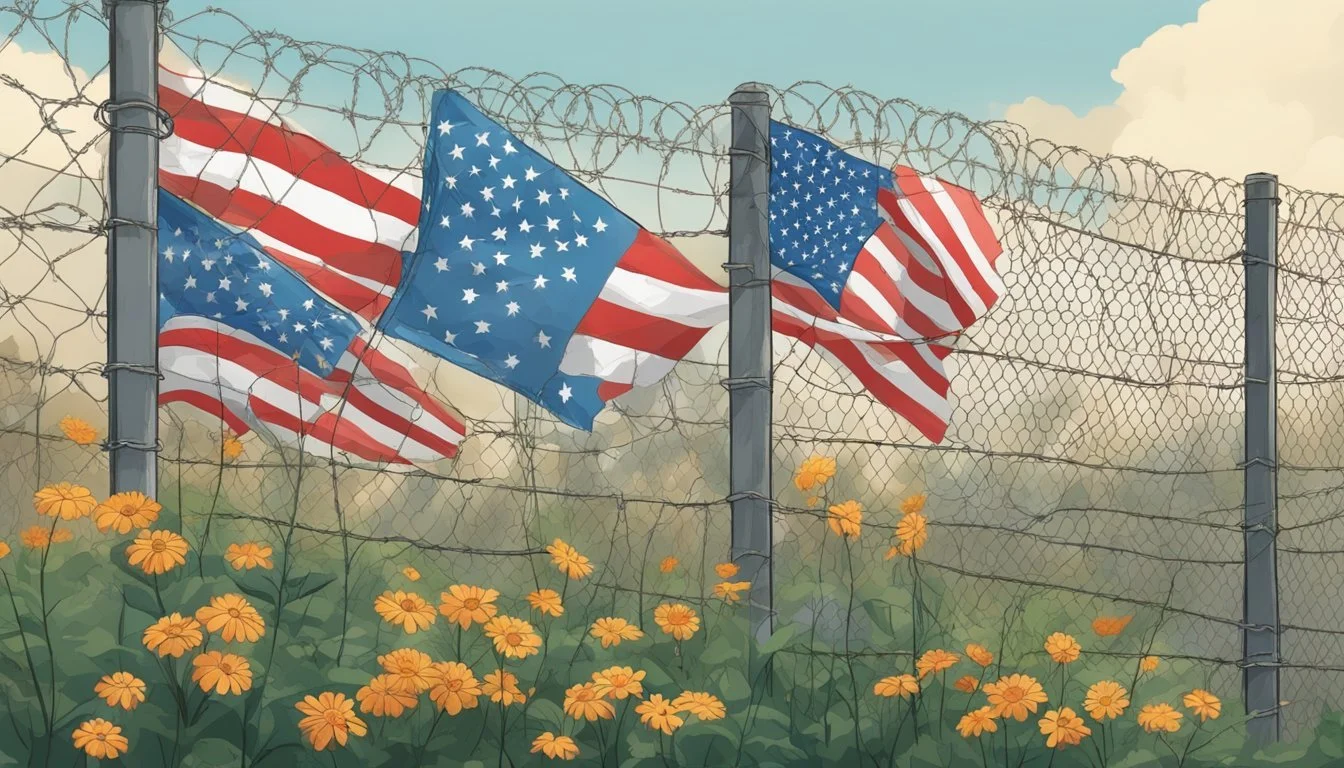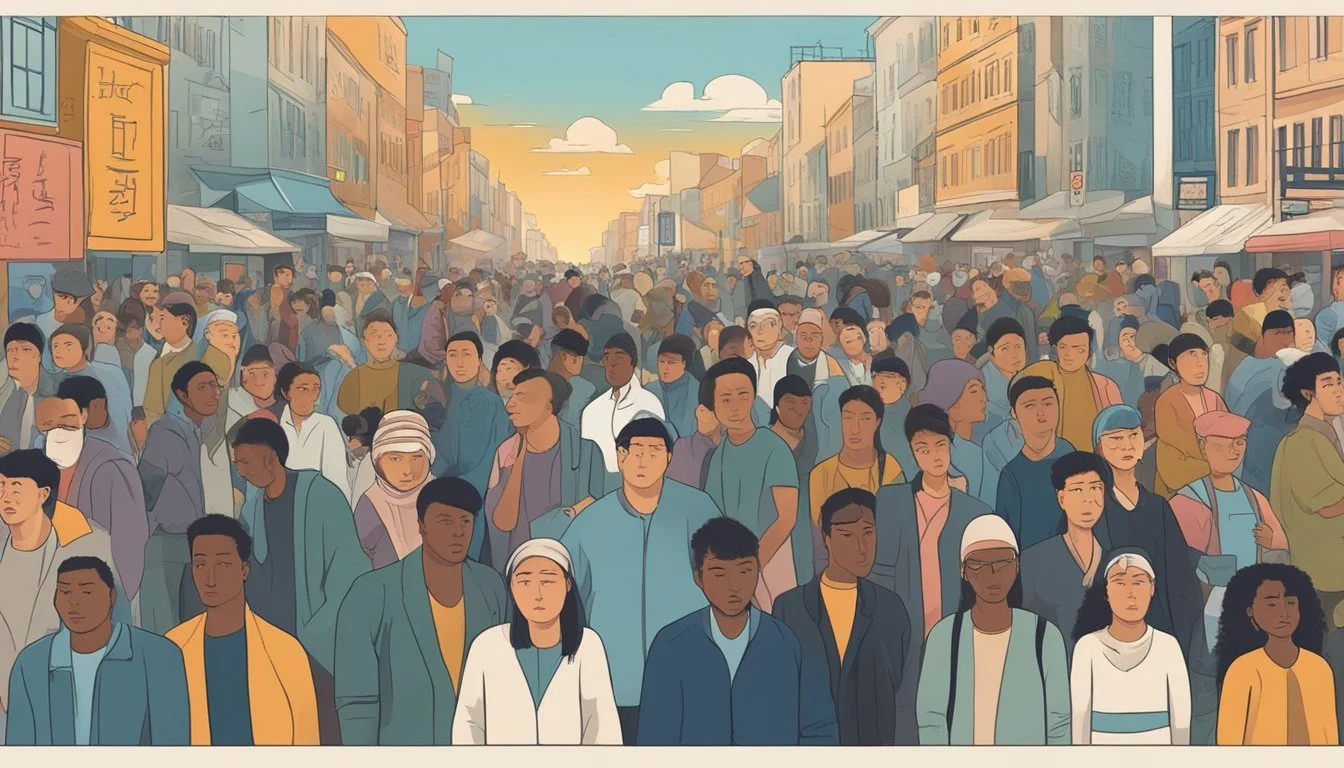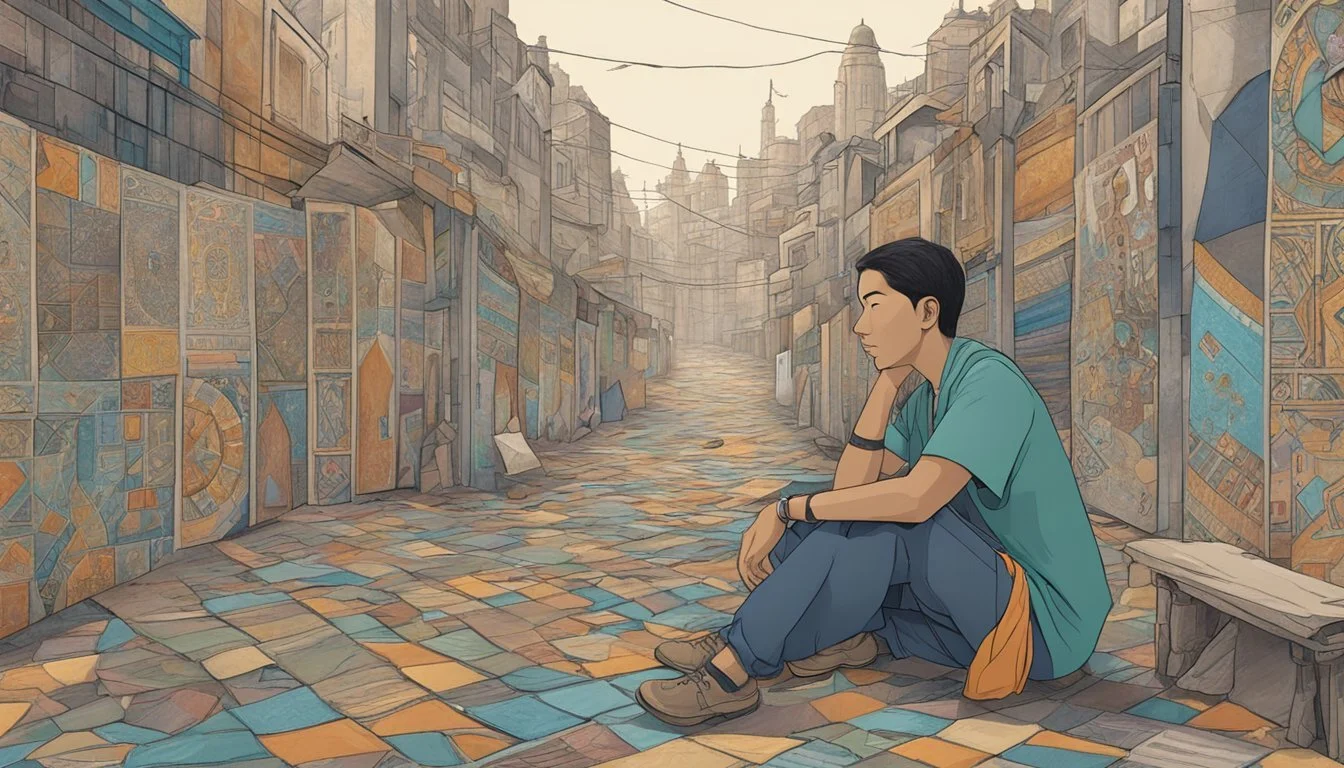14 Signs You May Be Experiencing Cultural Trauma
Key Indicators and How to Recognize Them
Cultural trauma can deeply impact individuals and communities, often manifesting through varied and complex symptoms. Recognizing these signs is crucial for addressing and healing from the adverse effects of cultural trauma. How do you know if you or someone you know might be experiencing cultural trauma?
Understanding the signs and symptoms can lead to more effective support and coping strategies. This article aims to shed light on 14 key indicators of cultural trauma, helping readers identify and understand their experiences more clearly.
1) Difficulty Finding Common Ground with Others
Individuals experiencing cultural trauma often find it challenging to connect with others. This can stem from differing cultural backgrounds or shared traumatic experiences.
They may feel isolated or misunderstood. This can lead to a reluctance to engage in social activities or form new relationships.
The lack of common ground can create a sense of alienation. They might struggle to relate to others' experiences or perspectives.
This disconnect can further reinforce feelings of being an outsider. The struggle to find commonality with peers can be a significant barrier to emotional and social well-being.
2) Persistent feelings of being an outsider
Many individuals experiencing cultural trauma often feel like outsiders.
This sensation can be particularly strong in social settings where cultural norms differ from their own. They might feel disconnected, unable to truly relate or integrate.
This feeling is not uncommon. It can arise when someone consistently shifts between different social groups without finding a true sense of belonging.
Adaptability sometimes exacerbates this issue. People who are highly adaptable may become "chameleons," blending in but never feeling rooted.
This lack of identity can be unsettling. They might question their place in various social circles and struggle with self-acceptance.
Adults, too, experience this. Even in familiar environments, they might feel as though they don't truly belong.
For more insights, consider reading about why some people feel like outsiders and how these feelings are linked to cultural experiences. Breaking free from this feeling requires understanding and effort to build genuine connections.
3) Avoidance of Cultural Celebrations
Individuals experiencing cultural trauma may exhibit a noticeable avoidance of cultural celebrations. These events, which once brought joy and connection, can become sources of distress.
This avoidance can stem from feelings of alienation or a disrupted sense of identity. Trauma can alter how people view their cultural heritage and traditions.
Avoiding these gatherings also minimizes the risk of encountering triggering situations. Such triggers include reminders of past trauma or interactions with certain individuals.
The frequency and importance of the trauma incidents also play a role. The number, frequency, and spacing of traumatic events can prolong aversion.
Trauma-informed systems recognize the need for cultural sensitivity. They understand how cultural context impacts the healing process for those affected.
4) Guilt about Assimilating into Another Culture
Guilt about assimilating into another culture can be a profound emotional challenge. Individuals may feel they are betraying their original heritage by adopting new cultural norms.
This guilt often stems from the tension between maintaining one's cultural identity and adapting to a new environment. It can be particularly intense if they feel pressured to abandon traditions to fit in.
Relatives and friends from the original culture might unintentionally amplify these feelings. Comments or expectations about cultural loyalty can lead to further emotional strain.
Immigrants might struggle with a sense of loss, feeling disconnected from their roots while still not fully accepted in the new culture. This duality can lead to a significant internal conflict, impacting mental health.
A way to manage this guilt includes finding a balance. Incorporating elements from both cultures can create a blended identity that respects the old while embracing the new.
Some may find it helpful to connect with others who have had similar experiences. Support groups or online communities can offer a space to share feelings and strategies for coping.
Self-compassion is also crucial. Understanding that one’s actions are a means of survival and adaptation, rather than a betrayal, can alleviate feelings of guilt.
5) Heightened Sensitivity to Cultural Stereotypes
Individuals experiencing cultural trauma often show increased awareness and sensitivity to cultural stereotypes. This sensitivity can manifest in various ways.
People may become more attuned to subtle forms of bias, feeling uncomfortable in situations where stereotypes are perpetuated. They may also find it difficult to engage in conversations that involve stereotypes, feeling a strong emotional response.
Additionally, they may actively reject and challenge stereotypes in their daily interactions. This can involve correcting others or educating them about the harmful implications of stereotypes.
These heightened sensitivities can impact social interactions. Individuals might avoid certain social situations or groups to minimize encounters with stereotypes.
This sensitivity can also affect one's mental health. The constant vigilance and emotional labor involved in confronting stereotypes can be exhausting and contribute to stress and anxiety.
6) Withdrawal from cultural activities
Withdrawal from cultural activities is a key indicator of cultural trauma. Individuals might avoid participating in traditions or ceremonies that they once found meaningful.
This retreat can arise from feelings of alienation or fear of judgment. The person may feel disconnected from their cultural community, leading to further isolation.
This behavior can also manifest as a loss of interest in cultural events or reluctance to speak their native language. All these are signs that cultural trauma impacts their daily life.
Peer engagement can help identify and address these feelings. Cultural differences can shape a person's response to trauma and influence their coping mechanisms.
By recognizing withdrawal from cultural activities, supportive actions can be taken to reconnect individuals with their culture and heritage.
7) Anxiety in Multicultural Environments
Anxiety can manifest differently across cultural backgrounds. In multicultural environments, individuals may experience unique stressors. These might include language barriers, cultural misunderstandings, and feeling isolated from the dominant cultural group.
Certain cultural syndromes, such as the abdominal wind syndrome, are examples of how anxiety symptoms are expressed differently. Understanding these differences is crucial for appropriate diagnosis and treatment.
Social stigma associated with mental health varies widely across cultures and can influence how individuals express and seek help for anxiety. In some cultures, showing symptoms may be seen as a sign of weakness, affecting the willingness to get support.
Coping mechanisms and sources of resilience also differ. For example, factors like ethnicity, gender, and religion can provide support but also act as sources of chronic stress due to discrimination or social stigma. This dual impact adds complexity to managing anxiety in multicultural contexts.
Incorporating cultural competence in mental health care is essential. Professionals need to consider cultural norms and values when diagnosing and treating anxiety to ensure that interventions are respectful and effective. This approach can significantly improve treatment outcomes and reduce cultural disparities in mental health care.
8) Difficulty maintaining cultural identity
People experiencing cultural trauma often struggle to maintain their cultural identity. This difficulty can manifest in various ways, such as feeling disconnected from cultural traditions or experiencing internal conflict about cultural practices.
For individuals navigating bicultural environments, this can be particularly challenging. The normlessness of biculturalism can lead to confusion and internal conflict, making it essential to negotiate and embrace one's dual cultural background.
Shifts in cultural identity, such as leaving a religion or embracing a different aspect of one’s identity, can further exacerbate this difficulty. These shifts often result in feelings of isolation or rejection from both cultural groups.
External pressures, such as family expectations and societal norms, can also complicate an individual’s efforts to maintain their cultural identity. These pressures can create an ongoing struggle to balance personal beliefs with those of the cultural groups they belong to, leading to additional stress and anxiety.
Individuals experiencing this challenge may benefit from seeking support to navigate and integrate their cultural identities. This process can help in fostering a more cohesive sense of self, despite the complexities that come with cultural integration. For more detailed insights, see the importance of embracing your cultural identity.
The difficulty in maintaining one's cultural identity under the weight of cultural trauma highlights the need for continuous support, acceptance, and understanding from both within and outside one's cultural groups.
9) Reluctance to speak native language openly
Reluctance to speak one's native language openly can be a significant sign of cultural trauma. Many individuals feel this reluctance due to fear of being judged or discriminated against. This can occur particularly in societies where the dominant language differs from their native one.
This hesitance can stem from previous negative experiences. For example, some might have faced ridicule or exclusion, leading to a preference for using the dominant language to fit in more easily. This behavior can result in a gradual erosion of their linguistic abilities and cultural identity.
Socializing exclusively with speakers of the dominant language also exacerbates this issue. Some individuals may feel compelled to avoid their native language to improve their social standing or professional opportunities. This can lead to feelings of isolation from their cultural roots and contribute to a sense of identity conflict.
Cultural trauma can also manifest through an emotional or psychological basis. Trauma, such as from conflicts or displacement, often discourages individuals from using their native language as a way to distance themselves from painful memories. Over time, this can result in a significant loss of native language skills and a deeper detachment from cultural heritage.
Families might find it challenging when children refuse to speak their native language, influenced by their broader social environment. This reluctance is addressed in resources like those found at Raising World Children, which offer practical tips for encouraging children to embrace their mother tongue.
10) Feelings of Loss and Grief Over Cultural Connections
Feelings of loss and grief over cultural connections can manifest in many ways. These emotions often arise when someone feels detached from their cultural heritage. This detachment might be due to migration, assimilation, or the influence of a dominant culture.
For refugees and migrants, this experience is often described as cultural bereavement. They may feel a profound sadness about leaving behind familiar customs, traditions, and social networks. This forms a unique kind of grief that is deeply tied to their cultural identity.
The impact of cultural disconnection can also be seen in how individuals deal with grief. Different cultures have varied practices and rituals around mourning. A person might struggle to adapt to new mourning practices that differ from their own, adding to their sense of loss.
The loss of cultural connections can affect mental health. Studies show that individuals experiencing cultural bereavement may have heightened feelings of guilt, anger, and anxiety. These emotions are often linked to their struggle with maintaining cultural identity in a foreign environment.
Grieving for cultural connections is a significant issue. Cultural considerations are crucial when addressing the needs of those facing these challenges. Recognizing and respecting cultural differences in grief can help provide better support to those experiencing this form of trauma.
11) Overcompensating to fit into dominant culture
Overcompensating to fit into the dominant culture often manifests as individuals going to great lengths to hide aspects of their own cultural identity. This might include changing one's appearance, mannerisms, or speech patterns to align more closely with the prevailing cultural norms.
People may engage in overcompensation to avoid discrimination or negative perceptions. They believe fitting in will lead to acceptance and opportunities. This behavior often results in internal conflict and stress.
Individuals might find themselves constantly second-guessing their actions and adjusting their behavior in social settings. This can be exhausting and detrimental to mental health, leading to feelings of inadequacy or alienation.
In some cases, overcompensation involves rejecting one's cultural heritage altogether. This can create a sense of loss and disconnection from one's own identity. It is a psychological burden that can exacerbate feelings of isolation.
For more detailed information, the concept of overcompensation in psychology explains this behavior further. It's important to recognize these patterns and seek support to manage the pressure of conforming to dominant cultural expectations.
12) Confusion over cultural norms
Confusion over cultural norms can manifest in various ways. Individuals might struggle to understand or adapt to the social rules and conventions of their cultural background.
This confusion can be more pronounced in individuals who have experienced cultural trauma.
The clash between different cultural expectations can lead to feelings of disorientation.
Such experiences are common among immigrants or those exposed to multiple cultural environments.
Adapting to new cultural norms can be challenging and stressful. Trying to reconcile differing expectations from various cultures often leads to internal conflict.
This confusion might affect daily interactions, making it difficult to navigate social situations. It can cause misunderstandings and feelings of alienation.
Recognizing these challenges is crucial for developing effective support systems.
Addressing the confusion over cultural norms can help reduce stress and foster a sense of belonging. Individuals can benefit from resources and support that focus on cultural competence and understanding.
Building awareness and promoting education about cultural differences can also help mitigate these issues. Engaging in open and respectful discussions about cultural norms can create a more inclusive environment.
13) Depression linked to cultural disconnection
Depression can manifest when individuals feel a profound sense of cultural disconnection. This often arises from forced assimilation, migration, or historical trauma that interrupts cultural continuity.
When people lose touch with their cultural roots, they may experience a sense of identity loss. This identity crisis can result in depressive symptoms as individuals struggle to find a sense of belonging.
Research indicates that cultural identities play a vital role in mental health. Claiming and embracing one's cultural heritage can act as a buffer against depression, promoting resilience.
Negative stereotypes and societal stigmas also contribute to feelings of disconnection. Encountering prejudice or discrimination can deepen feelings of isolation and exacerbates depression. Embracing cultural identity has been shown to enhance mental well-being.
For more insights, refer to the detailed discussion on cultural identity and its positive impact on mental health here.
14) Struggles with cultural duality
Struggles with cultural duality arise when individuals navigate between two or more cultural identities. This can create internal conflicts as they strive to balance the values and practices of each culture.
For many, this means oscillating between the expectations of their heritage and the predominant culture they live in. These conflicting demands can heighten stress and anxiety.
Individuals may find themselves feeling alienated from both cultures. They might feel they don't fully belong to either, leading to a sense of isolation and identity confusion.
This duality often impacts relationships. Cultural misunderstandings can strain interactions with family, friends, and colleagues. People may also experience judgment or criticism for not conforming strictly to one culture's norms.
Children in immigrant families frequently face these challenges. They might encounter pressure to assimilate while also adhering to traditional values at home. This can result in a divided sense of self.
Additionally, cultural duality can affect work and social environments. Navigating differing cultural expectations at work, for example, can be taxing and lead to workplace stress.
It's important to recognize that these struggles are a sign of cultural trauma. This issue is discussed in the context of culture and traumatic stress, highlighting the ongoing impact on mental health.
Understanding Cultural Trauma
Cultural trauma refers to the impact of collective, historical, and intergenerational traumatic events on communities and individuals. It involves psychological and social repercussions that spread across generations.
Definition and Overview
Cultural trauma can be defined as the complex psychological and social effects experienced by communities that have undergone significant distressing events. It can result from wars, colonization, genocide, and other large-scale incidents that disrupt the fabric of a community.
Unlike individual trauma, cultural trauma affects groups on a communal level, altering their collective identity. This form of trauma encompasses both emotional and cultural dimensions, leading to shifts in traditions, practices, and social behaviors.
Historical Background of Cultural Trauma
The origins of cultural trauma are often rooted in significant violent or oppressive historical events. For example, the genocide of Indigenous populations and the transatlantic slave trade have lasting effects on descendants.
These traumatic events are not just historical facts but continue to influence the social and psychological well-being of affected communities. The trauma experienced becomes part of the collective memory, shaping cultural norms and perceptions.
Research on cultural trauma and health disparities reveals how this form of trauma contributes to ongoing inequalities. Understanding historical context is crucial to grasp the full impact cultural trauma has on present-day communities.
Impact of Cultural Trauma on Communities
Cultural trauma manifests in various detrimental ways within communities, significantly affecting both psychological health and social structures. These effects, compounded over time, lead to persistent disparities and interconnected problems.
Psychological Effects
Cultural trauma can cause widespread psychological issues. Communities enduring chronic stress from historical oppression or ongoing discrimination are prone to higher rates of anxiety, depression, and PTSD.
These psychological stressors often arise from repeated exposure to stigmatization and systemic inequities. Individuals may experience feelings of helplessness and distrust, reducing overall mental well-being. Children growing up in such environments may face developmental challenges, manifesting behavioral problems that perpetuate cycles of trauma.
Moreover, a lack of access to mental health resources exacerbates these problems. Without proper support, communities struggle to recover from trauma, resulting in long-term psychological instability.
Social and Cultural Consequences
Socially, cultural trauma erodes community cohesion. Violence, trauma, and toxic stress can accumulate, affecting every aspect of communal life, as shown in various studies. This fragmentation often leads to the breakdown of social networks and support systems.
Racial trauma, in particular, disrupts cultural continuity and identity. It may hinder cultural practices and traditions, impacting how communities maintain their heritage. Structural racism's role further complicates this, creating barriers to economic advancement and social mobility.
Efforts to rebuild and strengthen these communities require addressing both tangible resources and cultural identity. Re-establishing cultural pride and resilience is crucial in overcoming the adverse effects of cultural trauma and fostering healthy, cohesive communities.
Strategies for Healing from Cultural Trauma
Healing from cultural trauma involves both community-based approaches and therapeutic interventions that provide the support and resources needed to address and overcome deep-rooted pain.
Community-Based Approaches
Building strong, supportive communities is essential. Community gatherings can function as a safe space for individuals to share and validate their experiences. Such environments foster a sense of belonging and collective understanding, which can be pivotal in the healing process.
Cultural events and rituals often play a crucial role. These gatherings help reconnect individuals with their heritage, offering comfort and a sense of identity. It's important for communities to promote inclusivity and respect, ensuring that every member feels valued and understood.
Peer support groups are another effective method. They provide a platform for individuals to discuss their trauma with others who have similar experiences. These groups encourage mutual support, helping members realize they are not alone in their struggles.
Therapeutic Interventions
Professional therapy is essential for many facing cultural trauma. Therapists trained in trauma and cultural sensitivity can offer targeted support and coping strategies. Cognitive-behavioral therapy (CBT) is often employed to help reframe negative thought patterns associated with trauma.
Another effective method is trauma-focused therapy. This includes approaches like Eye Movement Desensitization and Reprocessing (EMDR), which helps process and reduce the intensity of traumatic memories. Such techniques can lead to significant emotional relief and improved mental health.
Holistic practices, such as mindfulness and meditation, can also be beneficial. These practices help individuals stay grounded in the present moment, reducing anxiety and improving emotional regulation. Therapists may incorporate these techniques into treatment plans to enhance overall well-being.
Access to therapy should be made equitable. Efforts must be made to provide resources to underserved populations, ensuring that therapy is accessible to all who need it.











